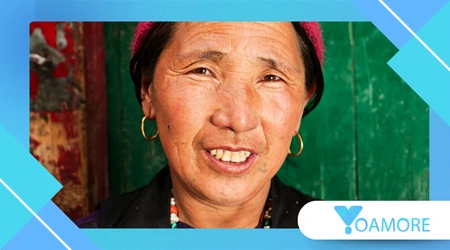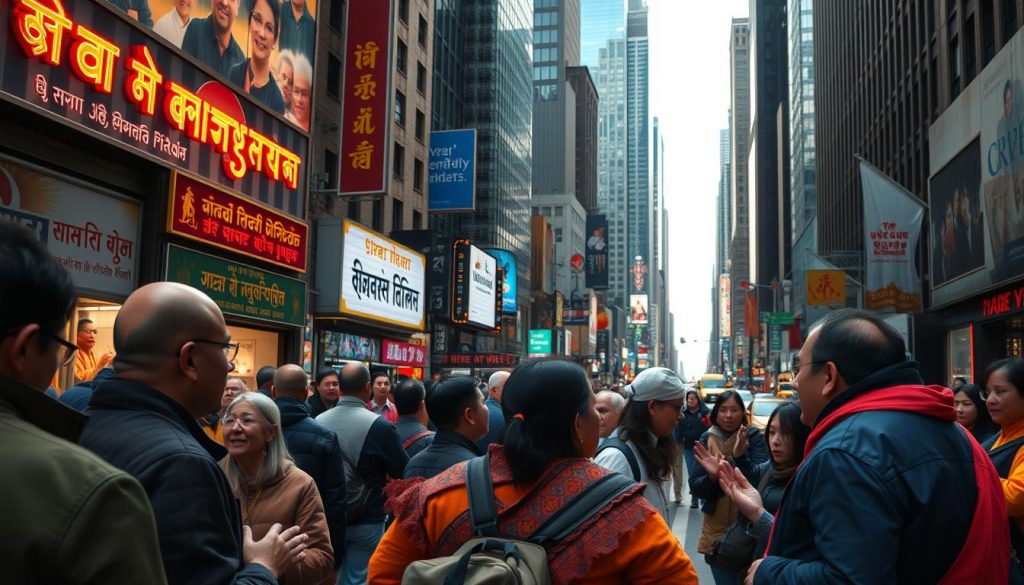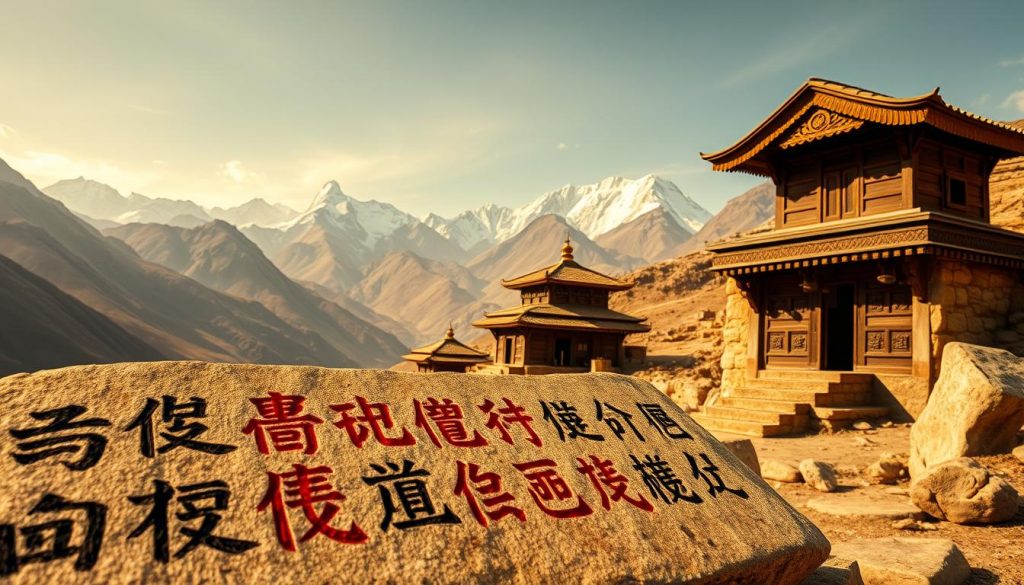Seke: Nepal’s Forgotten Tibetan Dialect

Only about 700 people speak the Seke language worldwide, and roughly 50 live in a single building in Flatbush, Brooklyn, according to the Endangered Language Alliance and the New York Times Seke article.
Anúncios
By the group’s own measure—fewer than 10,000 speakers counts as endangered—Seke sits in the red zone.
Seke belongs to the Tamangic languages within the wider realm of Sino-Tibetan dialects.
It is heard in five villages in Mustang Nepal, near the Tibetan border, where deep contact with Tibetan speech has shaped sound and syntax more than in related tongues like Tamang, Gurung, Thakali, and Chantyal.
Speakers gloss “Seke” as the “golden language.” Oral histories say it came from people who moved down from snowy peaks into a former Himalayan kingdom.
Anúncios
Daily life made them multilingual: Nepali for trade and schools, Tibetan for faith and travel, and local Baragaon varieties for neighbors.
New York adds a twist. The Endangered Language Alliance has mapped some 700 languages across the city, placing Seke in a living archive that far exceeds official counts.
This piece opens that window—linking village paths in Mustang Nepal to stairwells in Brooklyn, and tracing how small voices carry across a vast urban hum.
Origins, Classification, and Geography of an Endangered Himalayan Tongue
The story of Seke origins begins in the high valleys of Nepal. Speakers describe it as a “golden language,” tied to journeys from snowy peaks and to Buddhist sites carved into cliffs and caves.
Within Mustang geography, the tongue is rooted in five villages near the Tibetan frontier, where trade paths and monasteries shaped daily life.
Scholars place Seke within the Tamangic classification of the Sino-Tibetan family, a slot that aligns it with Tamang, Gurung, Thakali, and Chantyal.
In research on Sino-Tibetan taxonomy, David Bradley used the label “West Bodish” for this cluster, while Victor Mair noted the need to pinpoint branches rather than rely on broad umbrellas.
This view highlights contact across the Himalaya and keeps Seke distinct from unrelated West Bodish languages farther north.
Regional identity layers its structure. Some sources list Seke alongside Thakali dialects, also known by names such as Tangbe, Tetang, and Chuksang, reflecting how communities in and beyond Baragaon negotiate affiliation.
These labels trace trade ties, marriage networks, and ritual exchange that blur strict borders between villages.
Contact zones define its soundscape. Because Mustang bridges Nepal and Tibet, Seke has drawn strong Tibetan influence compared with other Tamangic relatives.
Bilingualism with Nepali grew during the last two centuries, intensifying in recent decades as roads, schools, and markets knit the region to the rest of the country.
Place matters abroad as well. A translocal thread reaches New York City, where families in Flatbush, Brooklyn, link the homeland to an urban grid.
This diaspora node mirrors the mountain network: lineage groups, temple gatherings, and media rooms that keep speech habits alive across vast distance.
Taken together, these strands—Seke origins, fine-grained Tamangic classification, layered identities tied to Baragaon and Thakali dialects, and the cross-border frame of Mustang geography—sit within a living Sino-Tibetan taxonomy.
They show how people, places, and names converge to map one small language across ridgelines and city blocks.
Also read: The Great Hurricane of 1780: The Deadliest Tropical Cyclone in the Western Hemisphere
Language Vitality, Diaspora, and the Urban Lifeline in New York
Across the Seke diaspora, New York City has become an anchor. Roughly 700 people speak Seke worldwide, and more than 100 live in the five boroughs.
In Flatbush, Brooklyn, nearly half of the city’s Seke speakers share one seven-story building, weaving daily life into a tight network within the broader stream of Flatbush Brooklyn languages.
Language vitality metrics frame the stakes. By the Endangered Language Alliance NYC definition, a tongue with fewer than 10,000 speakers is endangered; by that yardstick Seke is in a severe zone.
Families weigh work, school, and media habits while trying to keep home speech steady in a city known for NYC linguistic diversity.

The Endangered Language Alliance NYC, guided by researchers like Ross Perlin, maps the city’s 700-plus languages and helps situate Seke within that dense mix.
Through Voices of the Himalaya, Sienna Craig and community partners document stories that show how surnames such as Gurung and Lama intersect with identity.
Many Seke speakers carry these labels due to state categories in Nepal, yet their speech and culture remain distinctly Himalayan and Tibetan in character.
Schooling patterns add pressure. Children from Mustang often study in Kathmandu or Pokhara, where Nepali dominates the classroom.
Bollywood films and Hindi music reach homes and phones, nudging daily talk toward larger regional codes.
+ How Technology Helped Revive the Myaamia Language in the U.S
Even so, multilingual Seke speakers in Brooklyn draw on church halls, tea shops, and family gatherings to keep conversation alive among Flatbush Brooklyn languages.
| Indicator | Current Snapshot | Relevance for Seke | NYC Context |
|---|---|---|---|
| Speaker Count | ~700 worldwide; 100+ in NYC | Signals small, tight diaspora | Clusters within immigrant corridors |
| Concentration | Nearly half in one Flatbush building | Supports daily peer use | Aligns with enclave patterns |
| Language Vitality Metrics | Below 10,000 threshold | Classified as endangered | Targets for support and mapping |
| Community Platforms | Voices of the Himalaya projects | Storytelling and documentation | Amplifies NYC linguistic diversity |
| Mapping and Archives | Endangered Language Alliance NYC | Public awareness and resources | Connects Seke to citywide networks |
Flatbush’s layered immigrant past shows why enclaves matter. Jewish, Caribbean, and South Asian communities have long used dense social ties, local markets, and faith spaces to guard heritage.
The same ecosystem now helps the Seke diaspora hold ground, even as English, Nepali, and Hindi expand across work, school, and screens.
Through Voices of the Himalaya and the Endangered Language Alliance NYC, speakers build a record that lives beyond any one apartment or block.
In this urban setting, language vitality metrics meet real scenes of family meals, shared childcare, and weekend gatherings—small routines that keep Seke audible within NYC linguistic diversity.
+ The Sámi Languages: Fighting for Survival Above the Arctic Circle
Seke
Seke is an unwritten language of Mustang that its community calls the “golden language.” It is maintained by a small network across five villages and a diaspora abroad.
With about 700 speakers worldwide, the profile of Seke speakers Nepal highlights both resilience and risk.
The sound system and grammar reveal distinctive Seke linguistic features shaped by trade routes and highland life. Clear traces of Tibetan influence on Seke appear in honorific forms and loanwords.
Daily Seke and Nepali contact fosters widespread bilingualism, affecting vocabulary and style.
Older villagers report ease moving across neighboring Baragaon varieties, pointing to a deep multilingual ecology.
At the same time, Tamangic subgroup details place Seke within a Himalayan chain of related tongues, even as local naming practices tie it to specific settlements.
Classification varies in regional records, where Seke is also noted by village names such as Tangbe, Tetang, and Chhusang.
These labels align with Mustang and Myagdi histories and help map speech patterns alongside the core Seke linguistic features seen in everyday use.
A transnational pocket in New York City, especially in Flatbush, connects families to elders at home.
Urban networks encourage youth to record stories, even as school and work intensify Seke and Nepali contact.
Community groups in both places keep the “golden language” at the center of cultural life.
Across villages and boroughs, Seke persists not only as speech, but as a shared memory of place.

| Aspect | Details | Relevance |
|---|---|---|
| Family | Tamangic subgroup details within the Tibeto-Burman branch | Frames grammar and shared roots with nearby languages |
| Contact | Strong Tibetan influence on Seke and entrenched Seke and Nepali contact | Explains borrowing, honorifics, and mixed registers |
| Regional Ecology | Interaction with Baragaon varieties across Mustang | Shows historical mobility and multilingual norms |
| Speaker Base | Seke speakers Nepal in five villages; diaspora in New York City | Demonstrates local anchors and global links |
| Identity | Community label “golden language,” unwritten yet valued | Signals cultural prestige and continuity |
Forces of Language Shift and Models for Community‑Led Revitalization
Language shift factors converge at global and local scales. Scholars warn that nearly half of today’s languages could vanish by 2100.
Historic schooling and governance rooted in colonialism and capitalism in language loss favored dominant tongues, while industrial jobs and migration steered families toward market languages.
These pressures set the stage for change within a single lifetime.
Seke faces this squeeze from Nepali in schools and from Tibetan in trade and religion. Hindi media adds pull across Nepal.
Such mid-tier languages show how power does not flow only from English; it often arrives next door. The next generation’s daily choices—at home, at work, and online—now matter most.
Outside support can help when it centers local agency. The Endangered Language Alliance in New York, described in the Economist’s coverage of Ross Perlin Language City, models consent-based archiving and neighborhood classes.
These efforts echo a shift toward community-led revitalization that places speakers in charge of goals and timelines.
Scripts shape pride and public presence. Tim Brookes and the Endangered Alphabets Project argue that writing systems are often ignored.
While Seke is largely unwritten, orthography design, print art, and signage can make the language visible in streetscapes and schools, and can do so without top‑down control.
Scholars outline practical stages. The Julia Sallabank revitalization stages trace a path from extractive work to collaboration and, finally, to community leadership.
Moving into that last phase requires trust, patient training, and funding that follows the community’s plan.
New York offers a living lab. With hundreds of languages mapped by ELA and projects like Voices of the Himalaya, Seke speakers test low-cost tools: after‑school classes in Brooklyn and Queens, intergenerational storytelling, and micro‑archives that circulate first within the diaspora.
Community-led revitalization gains strength when housing clusters, youth media, and library partnerships reinforce home use.
Consent-based documentation protects sacred knowledge while making everyday speech easy to share. These small wins offset the blunt force of language shift factors in work, school, and media.
| Driver or Model | What It Looks Like for Seke | Risks | Community‑First Actions |
|---|---|---|---|
| Colonialism and capitalism in language loss | Schooling in Nepali; job markets valuing larger languages | Erosion of home transmission; stigma toward Seke | Parent‑led home use; workplace clubs for Seke conversation |
| Mid‑tier regional pressure | Tibetan in monasteries; Hindi media saturation | Shift even without English dominance | Localized media playlists and podcasts featuring Seke |
| Ross Perlin Language City approach | ELA mapping, rights‑based archives, Flatbush classes | Tokenization if speakers lack control | Speaker‑owned recordings and release permissions |
| Endangered Alphabets Project | Orthography design, script art, public signage | Imposed scripts; aesthetic over function | Community testing of spellings; signage co‑created with elders |
| Julia Sallabank revitalization stages | From extractive to collaboration to community‑led | Stalling in early stages due to funding gaps | Train local teachers; fund community‑run budgets and timelines |
| Urban infrastructure | Libraries and schools in Brooklyn and Queens | Program churn; volunteer burnout | Stipends for youth mentors; stable weekly schedules |
| Documentation flow | Materials circulate within the community first | External extraction; loss of control | Consent protocols; community‑hosted repositories |
Conclusion
Seke stands at a crossroads. With roughly 700 speakers worldwide, its center of gravity stretches from Mustang’s five villages to New York City, where more than 100 speakers live, many in Flatbush.
This translocal map poses risk and promise: distance can weaken ties, yet urban networks can fuel preserving Seke through classes, archives, and daily use.
The Seke future depends on turning mobility into strength.
The language’s roots in the Tamangic or West Bodish branch of Sino-Tibetan, shaped by Tibetan contact and Nepali schooling, define a fragile ecology.
Unwritten status has sped up shift, especially where dominant scripts and media crowd out small tongues.
The Endangered Language Alliance’s mapping of endangered languages NYC shows how dense and precarious this landscape is, reminding readers that each voice carries Mustang cultural heritage across borders.
Global forces—colonial histories, labor migration, and platform media—push smaller languages to the edge.
Reversing that trend requires steady community language transmission and plans led by speakers themselves.
Guidance from Ross Perlin, Tim Brookes, and Julia Sallabank underscores respectful, non-extractive work: urban community classes, curated archives through projects like Voices of the Himalaya, visibility campaigns, and youth programs that make Seke useful at home, at school, and on the street.
The path forward is clear. Empower local leaders in Nepal and New York to set goals, measure progress, and celebrate everyday use.
Treat urban diversity as an asset, not a threat. If families and institutions share the load—weekday lessons, story circles, place-name walks, and digital recordings—the Seke future remains bright.
In doing so, preserving Seke protects Mustang cultural heritage and strengthens endangered languages NYC, ensuring community language transmission reaches the next generation and beyond.
